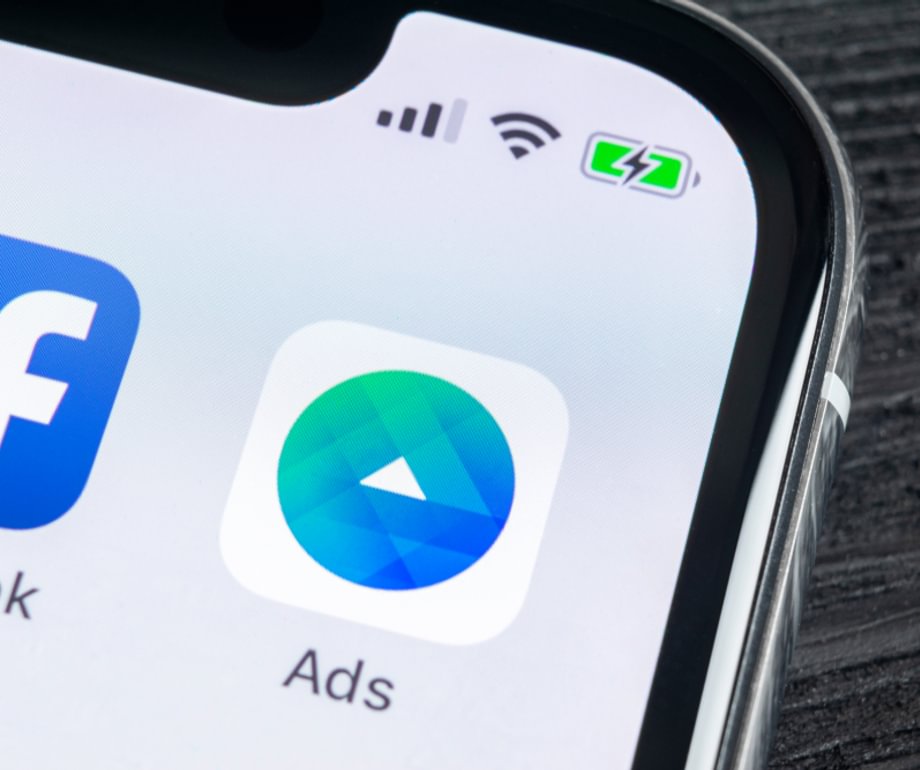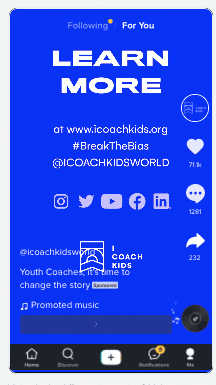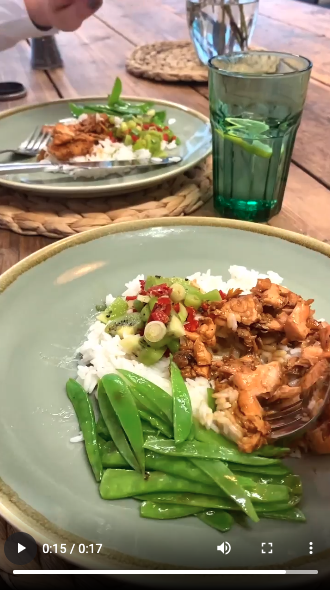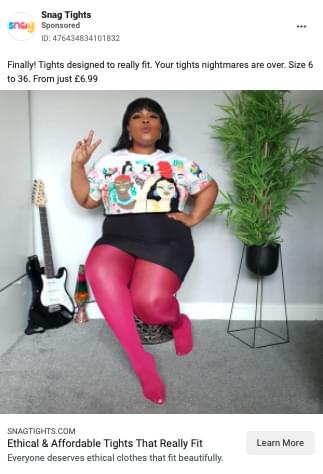Although marketing budgets are tight, paid social spend remains strong. With targeting options down and budgets up, how can you cut through and keep those eyes on your brand’s ads?
Our paid social experts have 10 ideas for creating high-impact, ROAS-driving ads. Time to get creative!
1. Don’t worry about studio-quality finish — grab your phone and get creating
This goes for images and videos in your ad creative. By using both, you can appear in more placements and appeal to a broader range of audiences.
On video more specifically, many brands businesses still aren’t utilising it when they could. In our experience, the main concerns tend to centre on quality and production. DIY content will reflect badly on my brand, won’t it? I’m going to have to pay thousands for professional videographers, aren’t I?
Stop right there. Let’s put this to bed right now: you don’t need a studio-quality finish. Your starter kit can be as simple as good lighting and a phone.
For inspiration, think about TikTok trends and some minimal-stress content like a product unboxing, ‘routine’ videos, a behind the scenes glimpse of your operations, etc.
2. Sound on/off — use closed captions for inclusivity, but give users freedom to choose
In the past, sound hasn’t been the highest priority, but TikTok has changed the game. However, we can’t ignore that many users are still opting to have their videos muted. So, for this reason — and to ensure your content is more inclusive and accessible — you should be making use of closed captions (CC).
Facebook has been pushing this for years; back in 2016, it reported that using CC can increase video view time by an average of 12% and in 2021, nine out of 10 TikTok users agreed that sound is vital to the experience.
3. Tailor your content for placement — think about text placement, in particular
Think about where your content is going to be used and tailor it. This doesn’t mean you can never repurpose content to other channels, but it means being aware of the limitations of doing so.
For example, don’t just repurpose TV ads and VOD. You cannot box-tick by pushing one type of video onto all platforms as there are nuances and considerations that need addressing. You can, however, maximise results by following best practices.
When you’re creating content, think about where they are going; a great example is text placement. This does not matter too much for ads in your Instagram feed, but it matters a lot for others. If you’re running ads on Instagram Stories and Instagram Reels, they may have the same dimensions but they aren’t the same requirements, so don’t use text in the bottom third of your image or video.
The same applies with TikTok — paid ads need more space at the bottom than organic TikToks. Keeping this in mind will mean your content meets needs and performs better.
4. Let the brand breathe — use guidelines, but don’t be too rigid
Brand guidelines are essential and a very useful resource to ensure recognition of your brand, but when creating social content, it’s okay to loosen the rules a little from time to time (relax, brand managers, we don’t mean complete abandonment!).
For example, UGC is a great way to creatively involve your audiences and consumers, and will likely not fall directly into your guidelines. UGC can do the talking, rather than polished, brochure-style photography.
Tying into our first point about not needing a studio-quality finish, not all paid social artwork has to be beautifully branded; if your users are clicking through to your social profile or website, that’s where they’ll find it.
HelloFresh has recently been running ads that promote their recipe boxes, but their branding takes a back seat and only features at the end. They let the product do the talking.
Don’t be afraid of the unpolished, the growing trend for ‘anti-design’ sees people mixing and matching fonts all over the place to create organic, unpolished content. There’s definitely a place for it.
Interested in learning a bit more? We've written a guide about how to apply your brand guidelines on social media (and when it's okay to break the rules).
5. Cater to shorter user attention spans — think about the customer journey
Think about the five-second rule — in a skippable world, you only have a handful of seconds to engage your audience and make that first impression. The optimum length for video ads on Facebook is between 5–15 seconds.
If a user is being introduced to your brand for the first time, what do they need to know? And if you’re running retargeting ads, think about who you’re retargeting and tailor your message accordingly.
This is relevant to static ads too — create something that stops them scrolling, but quickly communicates why they should click through. Think about what your consumer wants to see, rather than what you want to show them.
6. Split-test different creative styles and formats — test, review and be flexible
Don’t be bound by one creative idea to drive your brand. More options allows for liquidity; you’ll have more presence across placements, and you’ll be able to learn more about what your customer wants. We’d aim for 4–6 creatives per ad set, testing different styles and choosing both image and video (where appropriate).
It’s also a good idea to cross-test different formats and platforms, so try your TikToks on Facebook and Pinterest. Just remember to consider size and text placement.
7. Harness UGC — trust your customers to be your best trust signal
If you’ve got it, use it. If you haven’t, ask for it!
No one else can replicate your UGC. It’s completely unique and allows your customers to see people who look like them enjoying your products.
UGC fits into the whole idea of showing rather than telling. Inviting your audiences to see how to use your product in the real world is far better than listing its benefits. Show them how people use what you sell to solve their problems.
As well as simply asking, to develop a bank of UGC, you can work with influencers, real customers or UGC creators; perhaps consider using Meta Partnership or TikTok Spark Ads from the user’s own account.
8. Look like your audience — remember your users are diverse and varied
Cater to this diversity. Representation in your content matters. In the same way you may include closed captions to be inclusive, you also need to allow consumers to see themselves reflected in your creative.
This means different ages, sizes, ethnicities, family setups and even varied pet breeds — not everyone has a golden retriever! Naturally, this will increase engagement with your ads: users will feel a part of your brand.
What better way to do this than with UGC?
9. Be on-trend — try your hand at popular sounds and styles
Is there a trending sound right now? Is there a saying that’s going around?
By including this, you naturally make your ads feel more native and current by paying attention to how and what people are consuming; you’re able to stop the scroll and feel less like an ad.
Of course, it is worth bearing in mind trends (and attention spans) are shorter these days, so move fast and don’t wheel out the same creative when the trend has already passed.
When it comes to sounds, you can check out TikTok’s Creative Center to see what’s the current earworm for users.
10. Keep it authentic — find the balance between on-trend and totally off-brand
Yes, work to trends, but some just won’t work for you no matter how hard you try. You’ll probably know if they feel clunky and totally inauthentic. Have fun with content, but keep your values in mind so you can retain trust.
Avoid hopping on trends to showcase a fashionable piece of creative - no greenwashing or faux allyship, your audience will see through it and it will leave a bitter taste.
What about artificial intelligence tools in paid social ad creation?
Machine learning tools like Advantage+ are pushed widely by Meta and touted as a way of improving efficiency, helping to reduce setup time and identify and aim for the highest value customers.
“‘Advantage+ shopping campaigns are designed to be the most efficient solution for performance-focused advertisers looking to drive online sales.’”
AI tools certainly have benefits. They do a lot of the testing and can alleviate some of your workload, simplifying campaign creation to reduce the amount of manual input needed. Machine learning is quick to test and learn, pinpointing your highest-performing creative.
However, you sacrifice a degree of control. You have limited targeting options; many are preset and not totally bespoke to the needs of your business.
You also hand over all the responsibility for optimisation of campaigns, audiences and placements. Sometimes, creative can be cropped in a strange way, making your ads look a bit funky. Also, you can’t set bids or target costs, which may not be preferable for brands with rigid CPA goals.
AI tools are definitely worth trying, but bear in mind the control you lose.
So, ready to create some knockout ads? Play, experiment, be bold and if you’re still not sure how to make your paid social creative work for you, maybe our team of social media advertising experts can help.
Need help levelling up your social media?
Contact UsPost by

Laura joined Team Extreme in 2017 and through the years has refined her social media skills to become our Paid Social Strategist. She works with our social clients to plan and execute content across a broad range of sectors and channels, helping clients maximise their results and ROI.
Project
Post by

As our dedicated Social Media Designer, you'll find Sally behind either behind a screen or behind the lense capturing the essense of all the brands we work with. As Extreme's star baker, you might also find her in the kitchen cooking and styling dishes to look mouthwateringly delicious. If you ever find yourself drooling on your phone, that's probably one of Sally's creations!
Project





